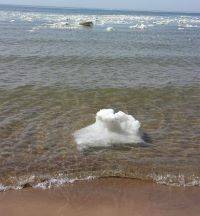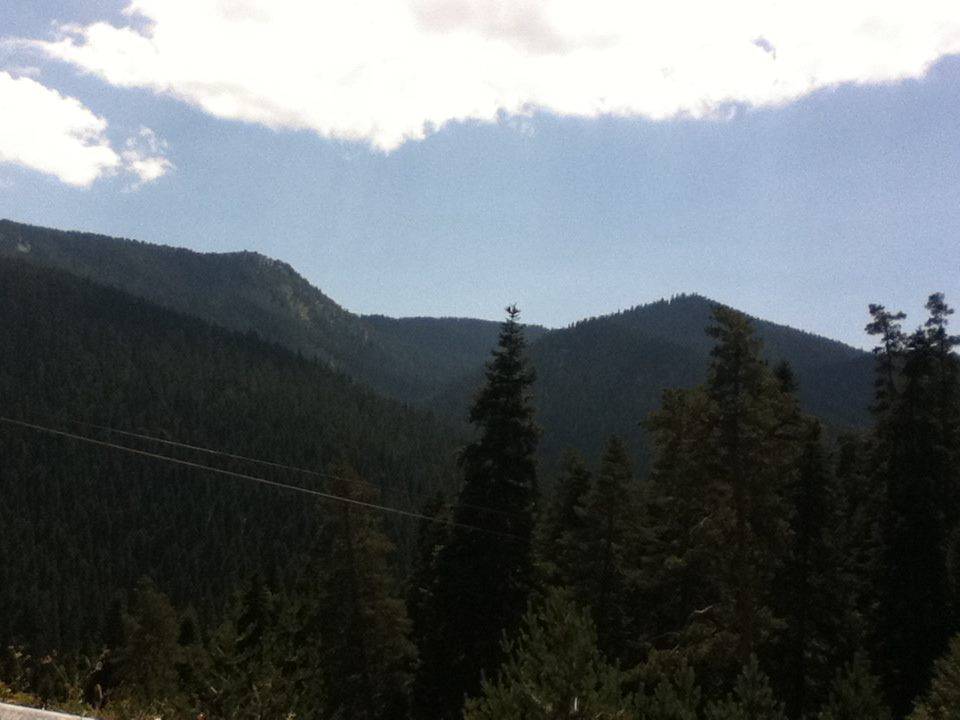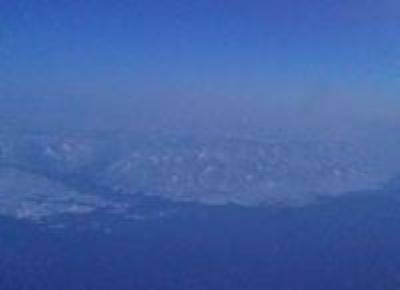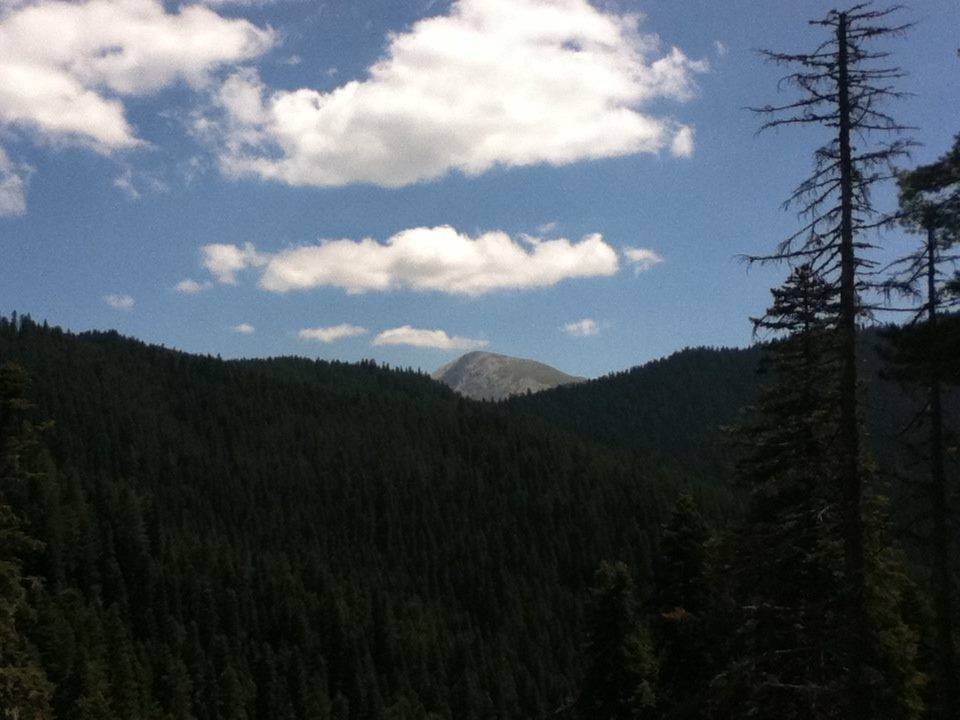Common Misconceptions about Climate Science Debunked
We debunk misconceptions regularly. Visit us often for more.
If you wish to submit a misconception, or send us feedback on our content, email us ([email protected]) with a succinct description of the misconception, its correction, and any references/links.
[1690754468].jpg)
1. The Earth predominantly receives heat, infrared radiaton, from the Sun.
Correction: The Earth does receive infrared radiation from the Sun but most of the energy released from the sun is in the visible light and ultraviolet range of the electromagnetic spectrum. Specifically, about 49% of the Sun's energy is infrared, 43% is visible light, 7% is ultraviolet, and 1% of other types of radiation. The Earth's atmosphere converts some of that light to heat energy we feel on our skin.
2. The Sun is on fire, burning.
Correction: The Sun is not burning or on fire because there is essentially no oxygen in the Sun. The Sun is hot because of nuclear fusion reactions converting hydrogen to helium at its core.
Bonus misconception correction: Also, the Sun is white. It appears yellow or orange to us usually at dusk or dawn because light rays have to go through our atmosphere which has dust particles and pollutants in it. On Mars the Sun appears blue at dawn and dusk because of fine dust in the Martian atmosphere.


3. Humid air is heavier than dry air.
Correction: Quite the opposite, compared to the two dominant gases in the atmosphere, nitrogen and oxygen, water vapor is light. The molecular mass of nitrogen gas is about 28 atomic units, 32 for oxygen gas, and 44 for carbon dioxide. In contrast, water vapor has a molecular mass of 18. Humid air feels oppressive because high humidity makes people physically uncomfortable.
4. Sea level rise is only caused by melting glaciers.
Correction: Increased temperatures lead to ice melting which raises global mean sea level. However, the thermal expansion of water due to increased temperatures is also an important contributor to sea level rise plus land water storage. In fact, about half of currently occurring sea level rise is caused by the thermal expansion of water.
5. Melting Arctic sea ice will raise global mean sea level.
Correction: Because the ice is already in the sea, melting this ice will not change the volume of the ocean or raise sea level. However, melting ice on continents will raise sea level and affect how well the oceans mix.

6. Climate models predict an increase of 5 to 6 ºC in global average temperature in the next 100 years. This is no big deal because it is only a fraction of the average temperature difference between summer and winter, or day and night at mid latitudes.
Correction: This sounds logical because the average temperature difference between summer and winter at mid latitudes can be 15-20 ºC, and 10-15 ºC between day and night. But, the key point here is global average temperature, not local temperatures or regional averages. So 5-6 ºC rise in temperature is a BIG deal. Let's put this in context. The global average temperature difference between the Last Glacial Maximum (21,000 years ago; end of the last "ice age") and today is about 6 ºC. Another example, only a 2-3 ºC rise in global average temperature and a 20-30% decrease in rainfall led to the demise of the Maya Civilization.

7. Photosynthesis is enough to curb global warming.
Correction: If only. According to the IPCC report, the photosynthesis/respiration balance absorbs about 1 gigaton of carbon from the atmosphere every year, and the oceans absorb 2 gigatons per year. But human industrial activities emit 6 - 9 gigatons/year of carbon to the atmosphere. So photosynthesis doesn't even come close to making up for the extra emissions.
8. The atmosphere mixes slowly, over hundreds of years.
Correction: Nope. The gases in the atmosphere are generally pretty well mixed with the exception of water vapor because its evaporation and precipitation temperatures are within the range of the temperature at Earth's surface. In fact, the atmosphere mixes pretty thoroughly over timescales of weeks to months. The ocean however mixes throughout over timescales of 1,000 to 2,500 years depending on the assumptions made in calculations and models of the thermohaline conveyor belt.
9. The north and south poles have similar temperatures.
Correction: The south pole is significantly colder than the north pole, by an average of about 20 - 30 ºC.
Bonus misconception correction: This temperature difference between the poles is NOT a result of the tilt in Earth's axis as is commonly believed. It is caused by the strong currents in the Southern Ocean which isolate Antarctica from other continents and warm water currents. This and tall mountain chains going through the continent cause Antarctica to be much colder than the north pole with a 3-mile thick ice cover.

10. Humans are hurting the planet with excessive greenhouse gas emissions.
Correction: The Earth has experienced far greater fluctations of climate in both the hot and cold directions in its vast history. BUT human activities are causing rapid climate change that is hurting the adabtability and survival of its own species as well as many other species on Earth. The planet has survived worse, but how will its currently living species adapt to such a rapid change?

11. Greenhouse gases are warm.
Correction: This is a common misconception, and the language is misleading. The kinetic energy exhibited by the motion and bouncing of molecules is what we call "heat." The faster molecules bounce around, the higher the temperature. In addition to this motion, most gas molecules will vibrate the bonds that hold their atoms together. Non-greenhouse gases do this in one direction only. Greenhouse gases can do this in multiple directions which allows them to trap infrared radiation, heat. Technically speaking, this multidirectional vibration alters the dipole moment of greenhouse gas molecules. An example of this vibration of bonds is oxygen atoms stretching away and back from the carbon atom in the carbon dioxide molecule, both symmetrically and asymmetrically. Greenhouse gases can also change the geometry of their molecules and then flip back to their original shape, called bending. This type of intramolecular bond vibration is what allows greenhouse gases to trap heat.
12. The hole in the ozone layer is the cause of global warming.
Correction: Both the depletion of ozone in the stratosphere and the current rise in global average temperatures are big environmental problems caused by human activities. But they are not related to one another, except minimally. Although radiation escaping through the ozone hole to the troposphere does happen, it has a cooling effect on the stratosphere more than a warming effect on the troposphere. The use of chlorofluorocarbons (CFCs) in aerosol sprays and refrigerants caused the ozone layer to attenuate over Antarctica. But the global effort in banning CFCs is now allowing the ozone hole to mend. Global warming is caused by the trapping of heat in the troposphere through the excessive emissions of greenhouse gases.

13. Clouds are light in weight
Correction: An average fluffy white cloud weighs over a million pounds! They float in the sky because the air under the cloud is even heavier (denser).
14. The atmosphere is made of gas only.
Correction: The atmosphere also contains particles called aerosols which play a critical role in cloud formation.
15. The Earth is closest to the Sun during summer time.
Correction: Actually the opposite is true. The Earth is closest to the Sun during the northern hemisphere winter. Seasons are caused by the tilt of the Earth's axis, not Earth's proximity to the Sun. Also, the Earth's orbit is not a very exaggerated ellipse at all, it is almost circular. This misconception is based on unfortunate images in educational material showing the Earth's orbit around the Sun as a highly eccentric ellipse. If seasons were caused by our distance from the Sun, then it would be the same season everywhere. But, when it is summer in the northern hemisphere, it is winter in the southern hemisphere.
16. Clouds are made of water vapor.
Correction: Clouds are NOT made of water vapor. Water vapor, a greenhouse gas, is dispersed in the air. Clouds are made of both liquid water droplets and tiny ice crystals.

17. The atmosphere and glacial ice combined make up the largest reservoir of carbon on Earth.
Correction: The largest reservoir of carbon isn't a combination of these things, or even the fossil fuels. The largest reservoir of carbon is sedimentary rocks which are buried into the lithosphere. But, at the surface of the Earth, the largest reservoir of carbon is the ocean. Here's how the distribution of carbon breaks down in various reservoirs (in gigatons):
- Plant biomass: 550
- Atmosphere: 800
- Soil: 2,300
- Fossil fuels: 10,000
- Oceans: 38,000 (with 37,000 in the deep ocean)
- Sedimentary rocks: 100 million gigatons
